Transportation Research Update
 The Role of Gender and Identity in Travel Behavior
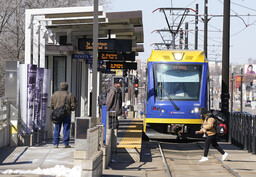
Ensuring the transportation system does not disproportionately impact underserved or underrepresented communities requires an accurate understanding of the needs and experiences of these communities. Previous research on gender and travel has largely defined gender as binary—female and male—which overlooks travel needs and experiences of non-binary people. New insight into the impacts of gender identity on travel behaviors and experience will support MnDOT’s efforts to advance transportation equity.
Nearly 300 participants representing a diverse group in terms of gender, geography and other social characteristics kept travel diaries on a smartphone app for two weeks. Participants recorded the purpose of their trips and the emotions—positive and negative—they experienced during the trips, and answered questions about gender identity, participation in daily activities and household tasks. Data from the travel diaries demonstrate that gender identity interacts with other individual characteristics such as race, employment status and family role in shaping experiences with the transportation system. For example, employed females with children shouldered more household tasks, including those involving travel, and Black females relied most heavily on public transit. Non-binary people had the worst reported subjective well-being when traveling due to a higher proportion of negative experiences during trips and daily activities.
|
Exploring a State-Tribal Partnership to Advance Energy Goals

MnDOT needs new ways to meet its renewable energy goals. The Red Lake Nation, home to the Red Lake Band of Chippewa Indians, is exploring the development of a solar project. MnDOT has a unique opportunity to partner with the tribe on this project, which could strengthen the government-to-government relationship between Minnesota and the tribe, advance shared renewable energy goals and support tribal sovereignty.
A virtual power purchase agreement is a unique energy contracting tool in which the tribe, as the developer, and MnDOT, as the buyer, would share economic value and risks. MnDOT would receive the renewable energy credits for the power it purchases while still relying on the regional power grid for electricity. Researchers analyzed MnDOT’s power needs, the predicted performance of the solar project and greenhouse gas emissions avoided. With this data, they estimated the potential economic value to MnDOT and recommended steps to proceed with the preplanning stage of this innovative and mutually beneficial energy partnership.
|
Evaluating Metrics and Performance to Advance Transportation Equity
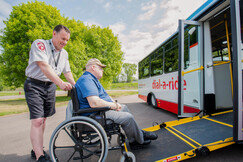
MnDOT works to ensure there are no barriers or undue burdens on any marginalized or vulnerable populations in the state. Understanding whether the agency’s policies, planning and actions across all programs are developed and implemented equitably can be difficult. Equity cannot be measured and analyzed like other parameters, such as miles of roadway, traffic congestion or bridges maintained. Whether communities are being treated equitably depends on community-identified needs and interests. New research provides MnDOT with fresh ideas on defining, measuring and analyzing transportation equity.
|
Understanding Transit and Shared Mobility Preferences in Greater Minnesota Post-COVID
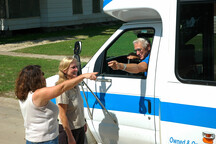
Public transit and ride-sharing usage sharply decreased during the pandemic. Social distancing measures, general discomfort or safety concerns have resulted in a 40% reduction in trips throughout the state, and smaller transit agencies have seen revenue reductions of up to 80%. Alternative transportation services are important to the viability of cities and towns in Greater Minnesota, and new research could help agencies and services bring back riders.
Over 750 people responded to an online survey in fall 2021 about use, concerns and preferences regarding public transit and shared mobility services. While driving alone is still the most common way to travel the state’s roads, many survey respondents indicated a strong interest in using transit and shared mobility services in the future. Safety measures such as frequent cleaning and increased ventilation in transit vehicles were most important to women, those with increased risk of infection, people dependent on transit and online shoppers. Desired service improvements were also important to many respondents, such as frequent and faster routes and real-time information. Researchers provided recommendations for transit agencies and shared mobility services to consider safety measures, service improvements, and communication and marketing strategies to attract users.
|
Innovative Research to Improve Bumble Bee Habitat Featured in Leading Conservation Science Journal
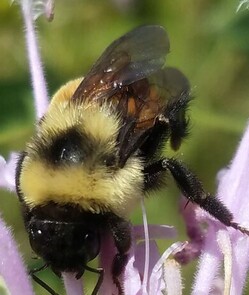
Nearly one-quarter of bumble bee species are in decline, including the rusty patched bumble bee, recently listed as endangered in the U.S. and Canada. Monitoring plays a key role in developing effective conservation strategies but there are major challenges to surveying bee populations whose mobility and small size make them difficult to detect, even when present.
In a project funded by MNDOT, entomologists developed an innovative method for counting these quick-moving bumble bees alongside roadways. Researchers found that MnDOT roadsides offer rich bumble bee habitats. Surveys identified a small number of rusty-patched bumble bees, as well as populations of 11 other bumble bee species or species groups, including another rare and potentially endangered bumble bee. The researchers have recently published their findings in Biological Conservation, Vol 283 focusing on the lessons learned about surveying these bee populations.
|
Snowplow Driver-Assist System Receives Research Partnership Award
MnDOT’s Snowplow Driver-Assist System partnership with the University of Minnesota received CTS’s Robert C. Johns Research Partnership Award.
During harsh winter conditions, snowplow drivers’ visibility can be severely compromised, making it difficult to keep these complex vehicles centered on roadways and away from obstacles. For nearly three decades, members of the research team have worked in the lab and the field—literally shoulder-to-shoulder with drivers—to improve safety and performance. Leveraging evolving GPS, camera, and related technologies, this at-a-glance system assists drivers with navigation and alerts them to potential hazards. Researched in Minnesota and Alaska, the Driver Assist System is used today in MnDOT and Dakota County fleets even as it is being further tested and refined for adoption throughout the state.
More Information
Our Transportation, Our Lives
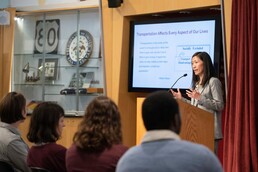
Transportation affects every aspect of our lives. On May 1, 2023, Professor Yingling Fan at the Humphrey School of Public Affairs hosted an in-person event titled "Our Transportation, Our Lives" to feature the transportation experience of underserved communities through short presentations, poster exhibits, and community networking.
The presentations on selected communities highlight the transportation experiences of six different communities in Minnesota, including African Americans, Hmong Americans, single mothers, immigrants, people living with HIV, and Native Americans. A recording of the event is now available on YouTube.
Subscribe to this research project at Improving Transportation Equity for all by Centering the Needs of Marginalized and Underserved Communities to receive an email update when the final report is available.
|
|